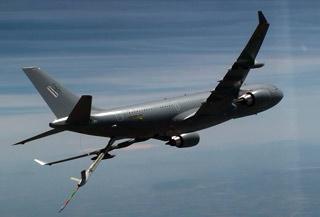
BEIJING (PTI): Gearing up to land a rover on moon and send manned spaceflights to built space station, China has said it will push forward its exploration of planets, asteroids and solar system in order to achieve self sufficiency.
China will launch lunar mission to land a rover on moon for carrying out a survey of its surface in the next five years and conduct studies for a human lunar landing, a white paper issued Thursday by the Chinese government listing the country's space achievement in the last five years.
The lunar probe projects have achieved milestone breakthroughs since 2006, with the successful launching of two lunar probes, the Chang'e-1 in 2007 and Chang'e-2 on October 1, 2010 to orbit moon.
The third unmanned mission was to land with a rover to bring samples the moon's surface back to Earth, it said.
China though achieved major milestones in space technology has not yet caught up with US and Russian technologies which currently eyed far deeper space missions.
Chinese scientists say that they are reinventing the technologies to master them in order to achieve self sufficiency.
Besides the moon mission, the while paper said China will also push forward its exploration of planets, asteroids and solar system.
By using spacecraft, China will study the properties of black holes and physical laws under extreme conditions, explore properties of dark matter particles, and test basic theories of quantum mechanics, it said.
China will push forward human spaceflight projects and make new technological breakthroughs, creating a foundation for future human spaceflight, the white paper said.
After recently accomplishing its first space docking of two unmanned craft, it would send manned flights docking with the in-orbit Tiangong-1 vehicle, its proposed space station to rival Russia's Mir.
In addition, China will launch space laboratories, manned spaceship and space freighters, make breakthroughs in and master space station key technologies, including astronauts' medium-term stay, regenerative life support and propellant refuelling, it said.
According to the white paper, China will build a stronger space transportation system, keep improving its launch vehicle series, and enhance their capabilities of entering space.
It will enhance the reliability and adaptability of launch vehicles in service, develop new-generation launch vehicles and their upper stages, and implement the first flight of the Long March-5, Long March-6 and Long March-7 launch vehicles.
The paper said China will build a space infrastructure frame composed of Earth observation satellites, communications and broadcasting satellites, plus navigation and positioning satellites, and will develop a preliminary long-term, sustained and stable service capability.
This week China operationalised its navigation system to reduce dependence on US controlled GPS.
China aims at developing and launching new-generation GEO meteorological satellites, stereo mapping satellites, radar satellites for environment and disaster monitoring, electromagnetic monitoring test satellites, and other new-type Earth observation satellites, it said.
China has made innovative achievements and breakthroughs in major space projects, and space technology has been upgraded "remarkably", it said adding that the country's Long March rockets have accomplished 67 successful launches, sending 79 spacecraft into planned orbits since 2006.
On the Satellite front, China has developed Fengyun (wind and cloud), Haiyang (ocean), Ziyuan (resources), Yaogan (remote-sensing) and Tianhui (space mapping) satellite series, plus a constellation of small satellites for environmental and disaster monitoring and forecasting, it said.
 Previous Article
Previous Article Next Article
Next Article












The Indian Air Force, in its flight trials evaluation report submitted before the Defence Ministry l..
view articleAn insight into the Medium Multi-Role Combat Aircraft competition...
view articleSky enthusiasts can now spot the International Space Station (ISS) commanded by Indian-American astr..
view article